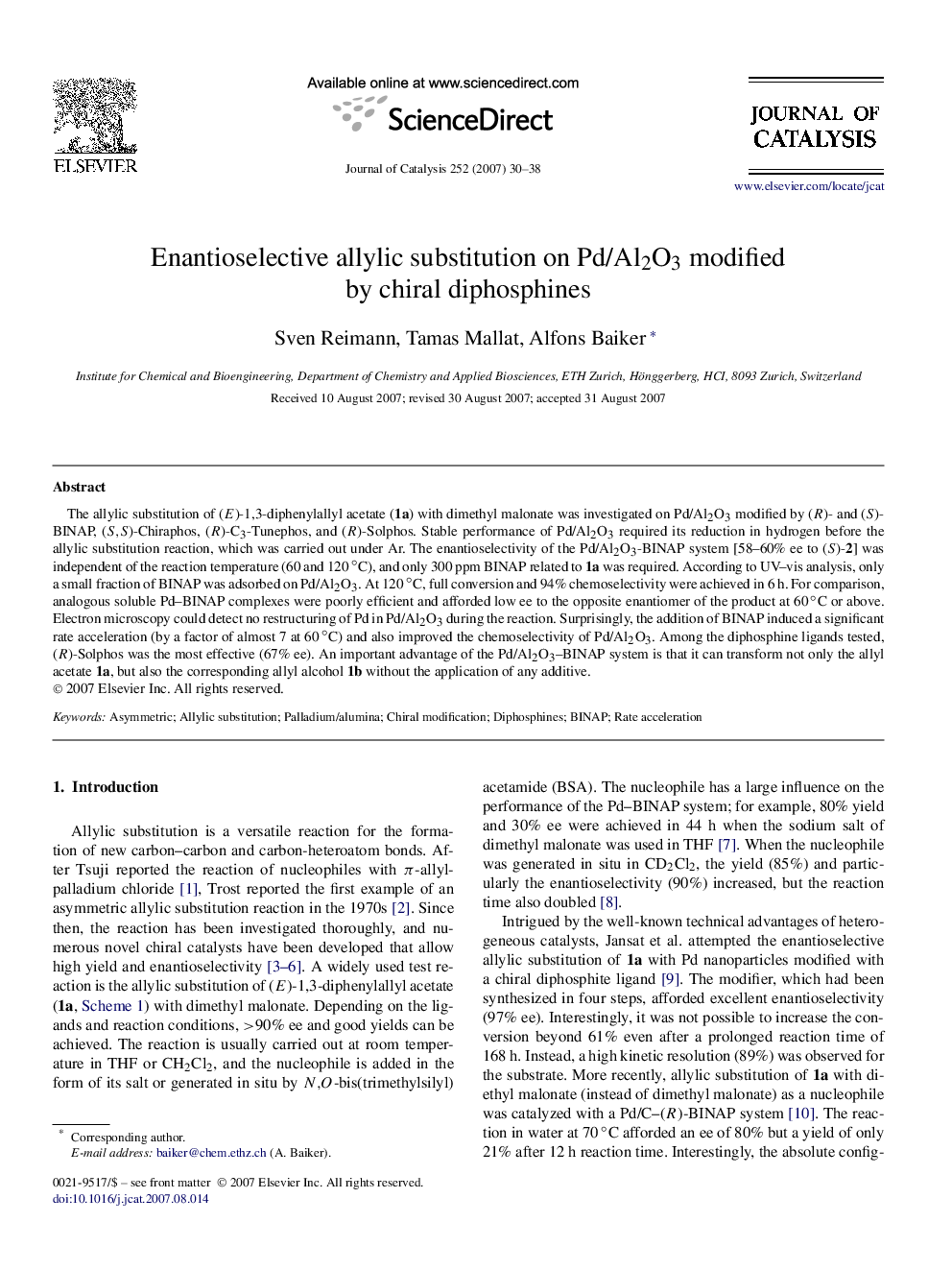| Article ID | Journal | Published Year | Pages | File Type |
|---|---|---|---|---|
| 62631 | Journal of Catalysis | 2007 | 9 Pages |
The allylic substitution of (E)-1,3-diphenylallyl acetate (1a) with dimethyl malonate was investigated on Pd/Al2O3 modified by (R)- and (S )-BINAP, (S,SS,S)-Chiraphos, (R)-C3-Tunephos, and (R)-Solphos. Stable performance of Pd/Al2O3 required its reduction in hydrogen before the allylic substitution reaction, which was carried out under Ar. The enantioselectivity of the Pd/Al2O3-BINAP system [58–60% ee to (S)-2] was independent of the reaction temperature (60 and 120 °C), and only 300 ppm BINAP related to 1a was required. According to UV–vis analysis, only a small fraction of BINAP was adsorbed on Pd/Al2O3. At 120 °C, full conversion and 94% chemoselectivity were achieved in 6 h. For comparison, analogous soluble Pd–BINAP complexes were poorly efficient and afforded low ee to the opposite enantiomer of the product at 60 °C or above. Electron microscopy could detect no restructuring of Pd in Pd/Al2O3 during the reaction. Surprisingly, the addition of BINAP induced a significant rate acceleration (by a factor of almost 7 at 60 °C) and also improved the chemoselectivity of Pd/Al2O3. Among the diphosphine ligands tested, (R)-Solphos was the most effective (67% ee). An important advantage of the Pd/Al2O3–BINAP system is that it can transform not only the allyl acetate 1a, but also the corresponding allyl alcohol 1b without the application of any additive.
